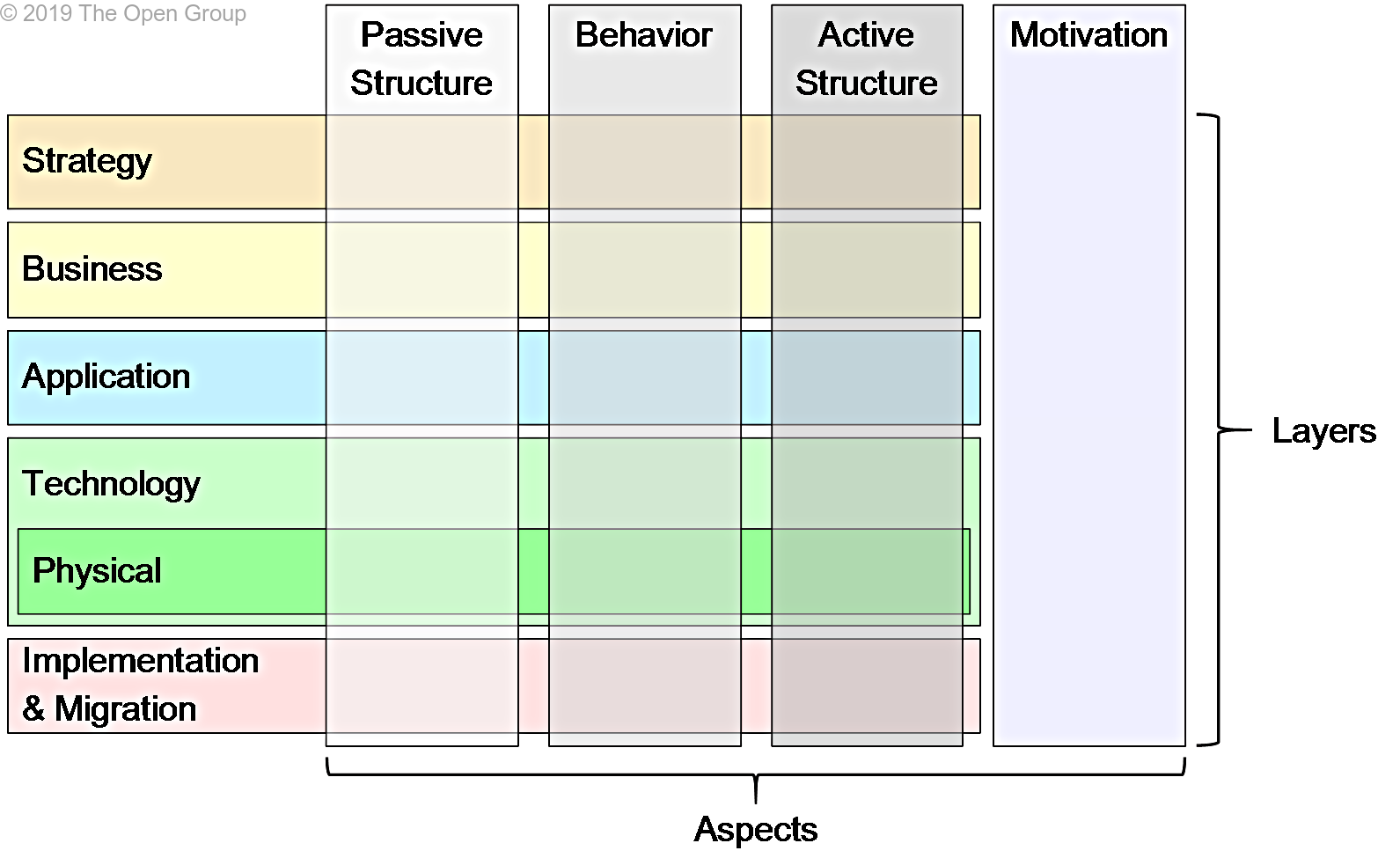ArchiMate®
The eArchiving Reference Architecture follows the ArchiMate® specification, where the general logical structure of an Enterprise Architecture is a matrix with Layers modelling the enterprise in a top-down approach and Aspects classifying the elements of the model based on layer-independent characteristics related to the concerns of different stakeholders.
ArchiMate® is a modelling language that is specifically designed to describe, analyse, and communicate Enterprise Architectures. It provides the entities and relationships for the representation of Architecture Descriptions across different layers. It also allows for the definition of specific viewpoints for different stakeholders. Other languages could also be used for this purpose, such as UML and BPMN, but these languages have specific purposes that do not cover the entirety of concerns that this work envisions.

Figure 1: Layers and aspects of the ArchiMate® full framework
Elements in the Strategy Layer model strategic directions and choices of the enterprise. They express how the enterprise intends to create value for the stakeholders and the required capabilities. In essence, the Strategy Layer elements answer the “What do you need?” question.
Business Layer elements model the operational organisation of the enterprise from a technology-independent business point of view. The Business Layer elements answer the “What do you do?” question, defining business services, functions and processes.
Application Layer elements model the application and data architecture of the enterprise. The Application Layer answers the “How?” question. The eArchiving specifications and tools are modelled in this layer. Aspects describe the structure, behaviour, and interactions of the elements in a layer independent manner.
The core elements of the ArchiMate language focus on describing the architecture of systems that support the enterprise. They do not cover the elements that drive the design and operation of the enterprise in different ways. The Motivation Aspect part of the model presents the motivations or reasons that guide the eArchiving Reference Architecture design. It aims to answer the questions of “Why do I need eArchiving?” and “What are the benefits of implementing eArchiving?”
Please note that not all of the layers are modelled in the eArchiving Reference Architecture. The main focus of the eArchiving Building Block is interoperability. Our approach, therefore, follows a top-down logic and intends to define those elements of the Reference Architecture that are more important from an interoperability point-of-view. This model concentrates on the strategy and business layer and the motivation aspect elements. The application layer is only partly modelled to position the eArchiving specifications and tools.